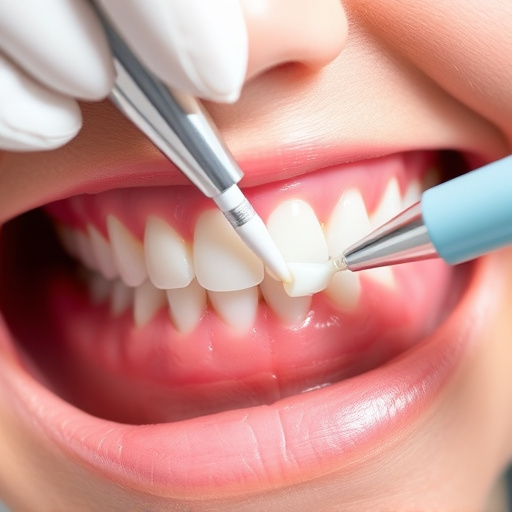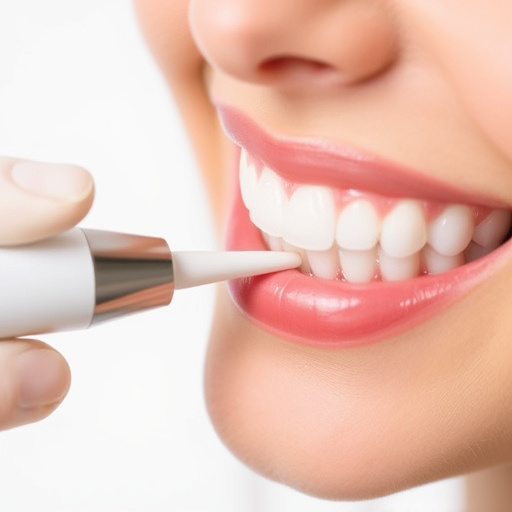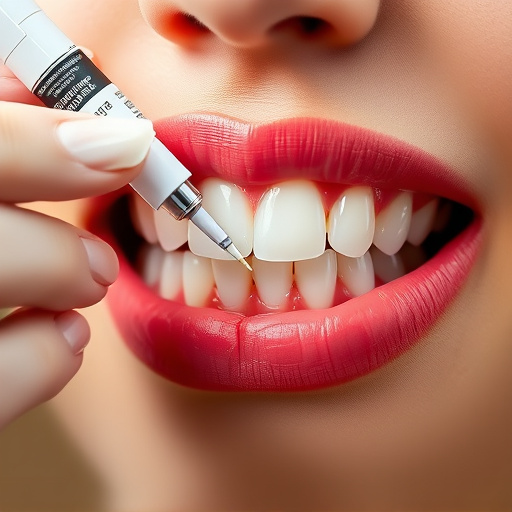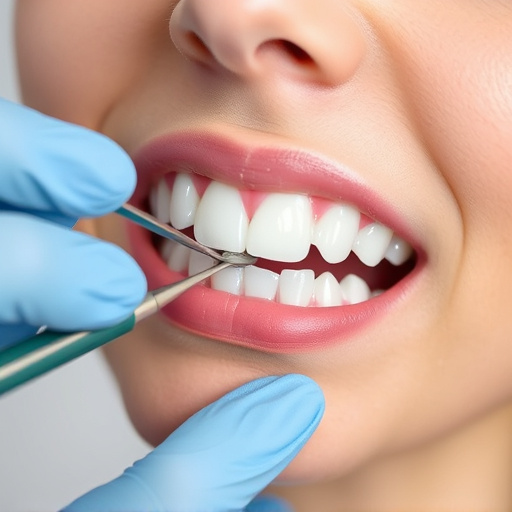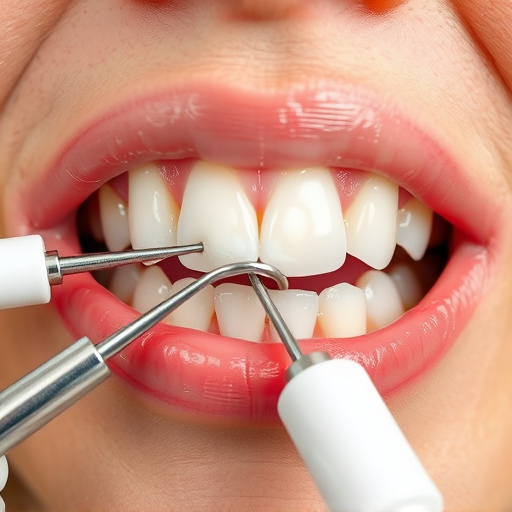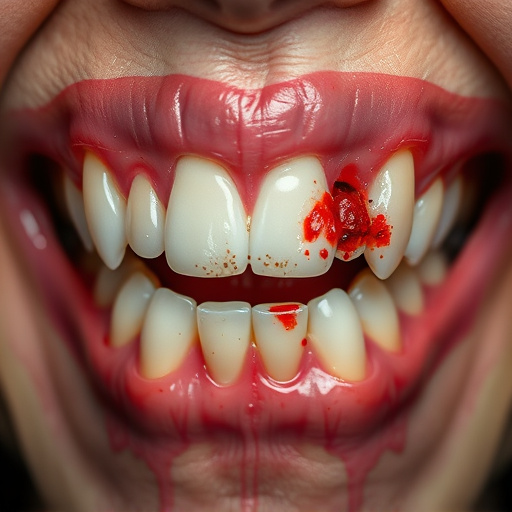Dental crowns and bridges are vital restorative dentistry solutions for damaged or missing teeth, offering both structural integrity and aesthetic improvements. Typically made from ceramic, metal, or resin, crowns cap teeth after decay or trauma, while bridges replace one or more missing teeth by spanning the gap. These treatments, often part of dental implant solutions, enhance oral health, prevent bone loss, and maintain facial structure. Material choices include traditional PFM, all-ceramic, and resin composites, each with unique benefits. Customized based on precise measurements, proper fit and functionality are ensured, requiring regular follow-ups and good oral hygiene for lasting results.
Dental crowns and bridges, integral components of restorative dentistry, play a pivotal role in supporting dental implants. This article offers a comprehensive guide to understanding these procedures. We explore how dental crowns and bridges stabilize and protect implants, enhancing oral functionality and aesthetics. Furthermore, we delve into the material options and procedural steps ensuring optimal results. By the end, readers will grasp the significance of these techniques in modern dentistry.
- Understanding Dental Crowns and Bridges: A Basic Guide
- The Role of Crowns and Bridges in Supporting Dental Implants
- Material Options and Procedural Steps for Optimal Results
Understanding Dental Crowns and Bridges: A Basic Guide
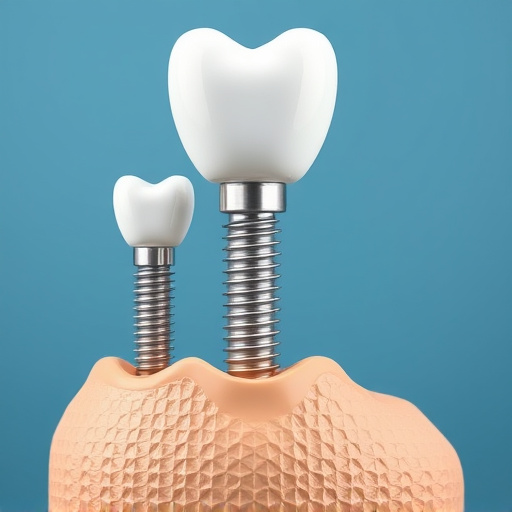
Dental crowns and bridges are essential components in restorative dentistry, offering solutions for damaged or missing teeth. A crown, often made from ceramic or metal, is a cap placed over a tooth to restore its size, shape, and strength. This procedure is commonly used when a tooth has decayed extensively or been damaged due to trauma. On the other hand, dental bridges are a fixed prosthesis that replaces one or more missing teeth, spanning the gap with an artificial replacement.
These treatments are designed to enhance both the functionality and aesthetic appeal of your smile. During a routine oral exam, your dentist can determine if you’re a suitable candidate for crowns or bridges, often as part of a broader dental implant solution. In case of dental emergencies or when a quick fix is required, family dentistry practices also offer these services to alleviate pain and maintain oral health until a more permanent solution can be implemented.
The Role of Crowns and Bridges in Supporting Dental Implants
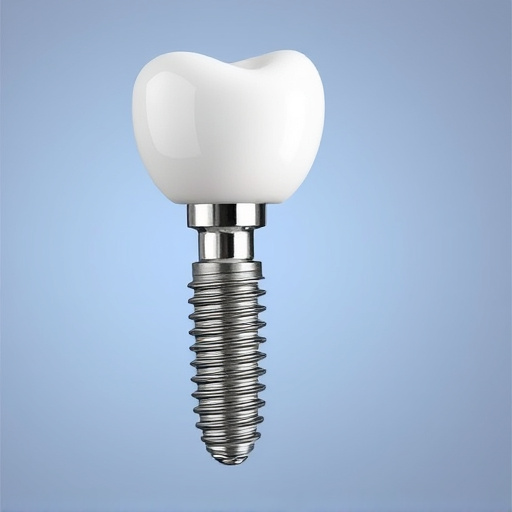
Dental crowns and bridges play a pivotal role in supporting dental implants, enhancing both functionality and aesthetics. When a tooth is severely damaged or missing, restorative dentistry techniques like dental implants offer a long-term solution. However, for optimal results, these implants need to be properly secured. This is where dental crowns and bridges come into play. A crown, essentially a custom-fit cap, is placed over an implant to restore its size, shape, and strength. Meanwhile, bridges span the gap left by missing teeth, connecting adjacent implants or natural teeth.
This dual support system not only provides structural integrity but also preserves facial structure, prevents bone loss, and maintains proper alignment of nearby teeth. Moreover, dental crowns and bridges offer a durable and long-lasting solution for tooth repair, ensuring patients can enjoy their restored smile with confidence. In combination with cosmetic fillings, these procedures contribute to an overall enhancement in oral health and appearance.
Material Options and Procedural Steps for Optimal Results
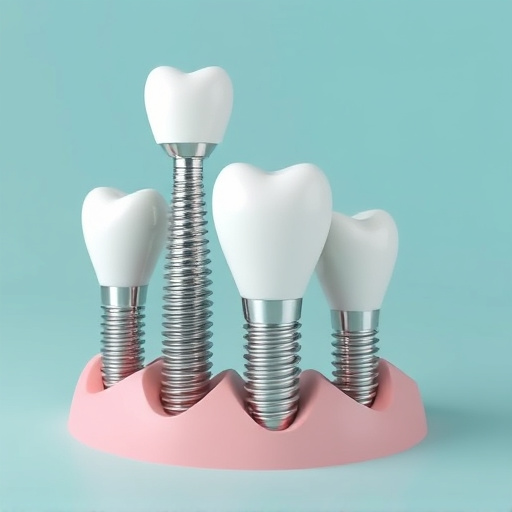
When it comes to material options for dental crowns and bridges that support implants, several choices are available. Traditional materials include porcelain fused to metal (PFM), which offers durability and a natural tooth appearance. All-ceramic crowns provide exceptional aesthetics and biocompatibility, making them ideal for patients with metal allergies. Resin composite materials have gained popularity due to their versatility and ability to mimic tooth color seamlessly. Each material has its advantages and is selected based on the patient’s specific needs, preferences, and oral health considerations.
The procedural steps for optimal results involve careful planning and execution. After a comprehensive consultation and routine oral exams at your family dentistry practice, the dentist will assess the condition of your teeth and gums. If tooth extractions are necessary, they will proceed with the removal and prepare the site for implants. Once the implants are in place, skilled dental professionals will take precise measurements and create customized crowns or bridges. During the fitting process, they ensure proper alignment, fit, and functionality. Regular follow-up visits and routine oral hygiene practices are crucial to maintaining long-lasting results.
Dental crowns and bridges, along with their role in supporting dental implants, offer a durable and natural-looking solution for restoring oral health. By understanding the material options and procedural steps involved, patients can make informed decisions to achieve optimal results. These advanced dental procedures not only enhance aesthetics but also improve overall oral function, providing a long-lasting alternative to traditional dentures.







